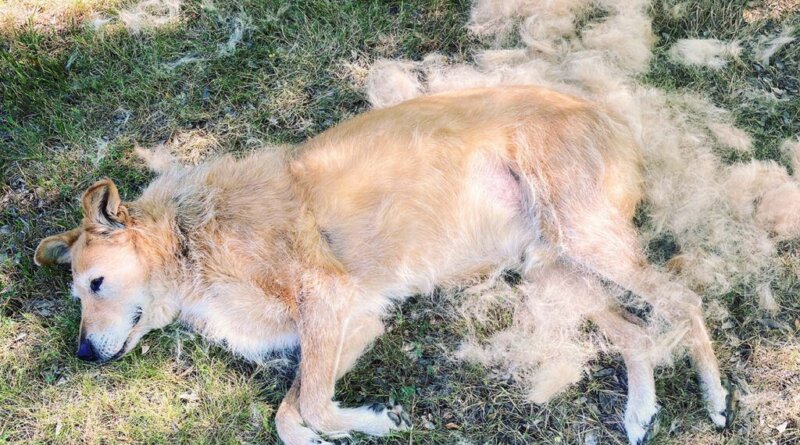Why Does My Dog Shed So Much?
All dogs shed, losing old hair as new hair grows in. Some dogs noticeably shed all year round, some blow their coats (heavy shedding) once or twice a year, and a few dogs shed only a little. Understanding your dog’s shedding can help you manage it.
Why do dogs shed in winter or when seasons change?
Hair growth and shedding cycles coincide with seasonal shifts, such as winter to spring. Dogs tend to shed least in summer months. Shedding increases in autumn as the incoming winter coat loosens old hair follicles. Shedding is usually moderate during the coldest months of the year but toward the end of winter, shedding increases to its maximum as spring approaches and dogs lose their winter coats. Seasonal shedding lasts two to four weeks.
Dogs who live outdoors experience more extreme seasonal shedding than indoor dogs because artificial light and controlled indoor temperatures disrupt natural cycles associated with weather and daylight changes.
Why does my dog shed so much?
The rate at which dogs shed depends on their breed. Double-coated breeds tend to shed year round because their undercoat and topcoat layers are constantly replaced. Double-coated breeds include Huskies, Retrievers, Shepherds, Sheepdogs, Beagles, and other breeds from cold climates. Their undercoats give them important insulation.
Single-coated breeds don’t have an undercoat, only a topcoat, so they shed less than double-coated breeds. Afghan Hounds, Boxers, Chihuahuas, Dachshunds, Dalmatians, Greyhounds, Poodles, Whippets, and Yorkshire Terriers are examples of single-coated breeds.
For both coat types, frequent brushing removes old, dead hair and aerates the coat by allowing air to flow through it. This helps keep the coat healthy and reduces shedding. Special grooming tools help remove old undercoats from double-coated dogs and disentangle mats and snarls.
Why is my dog shedding more than usual?
When a dog’s regular shedding pattern is disrupted by unusually heavy hair loss, look for underlying contributing causes. For example:
- Shedding can be triggered by trips to the veterinarian (especially if past visits have been unpleasant for the dog); relocations or evacuations; changes in the home environment, such as remodeling projects or long-term visitors; the loss of a human or animal companion; the addition of new family members; or unfamiliar activities, including training classes.
- Allergies. Reactions to grooming products, medications, household cleaners, the environment, or certain foods can cause allergic reactions that trigger hair loss. The allergen can be topical (applied to the skin), inhaled (pollen or other irritants), or ingredients in food, treats, or supplements.
- Skin or coat issues. Sparse hair, bald spots, or sudden hair loss can be caused by parasites like fleas, lice, or mites; fungal infections like ringworm; or underlying immune disorders or illnesses.
A good groomer can help when your dog’s shedding overwhelms you, and your veterinarian can help when underlying conditions contribute to unusually heavy shedding. However, having the right de-shedding tools can help you keep from getting buried in a hair-storm. If you are a do-it-yourselfer, see “Brushes and Tools for Shedding Dogs” for recommendations for the best de-shedding tools.




